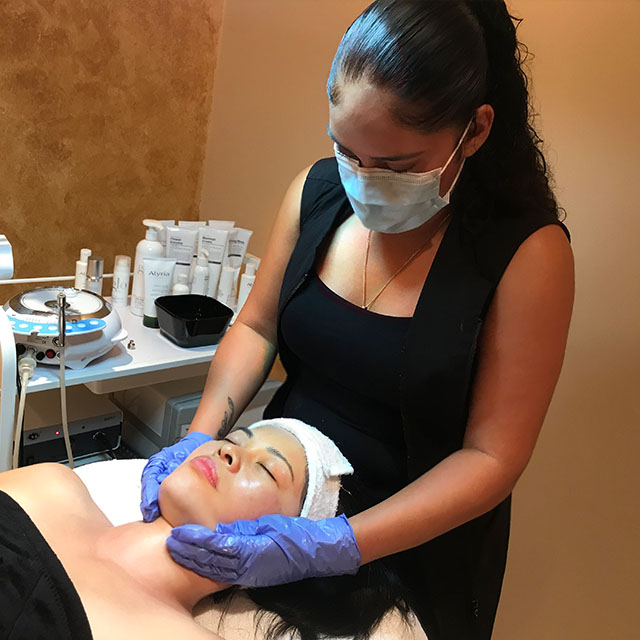Pigment Spots
Sun spots, sometimes called age spots or liver spots, are the result of uneven and excess melanin caused by frequent exposure to UV rays from either the sun or a tanning bed. Melanin is what causes your skin to have color.
Sun spots are usually flat, oval-shaped and have brown, black, or grayish coloration. They can occur anywhere on the body, but are especially prevalent on the face, chest, hands, and extremities (the areas that tend to get the most sun exposure). People who lived or grew-up in sunny regions of the world are more prone to have sun spots.
Differences between Freckles and Sun Spots
A person’s ability to make freckles is due to genetics. The freckle gene (MC1R) can be activated by sun exposure. Freckles typically fade away with age and even seasons whereas sun spots tend to last longer.
On the other hand, sun spots are typically larger than freckles because the involve multiple pigmented cells lumped together. People with lighter complexions are more susceptible to develop sun spots. They are also found to be more common among older populations due to repeated sun exposure over the years. The skin cells start producing excessive melanin, resulting in the formation of sun spots (thus the name “age spots”).
How Can We Help You?
Prior to receiving any treatments, the doctor will have a health consultation to answer any questions and which treatment option is best suited for you. Available treatment options are:
- Broad Band Light therapy (BBL) (Intense Pulsed Light (IPL) treatment)
- Resurfacing laser, chemical peels
- Prescription strength lightening agents




